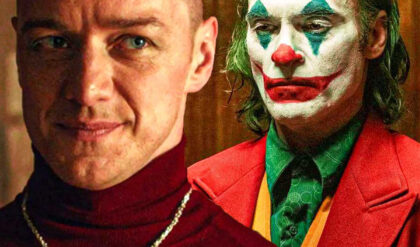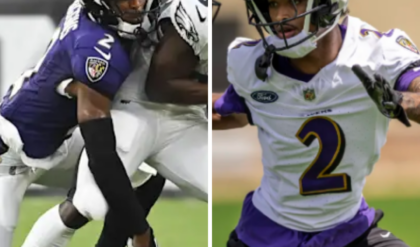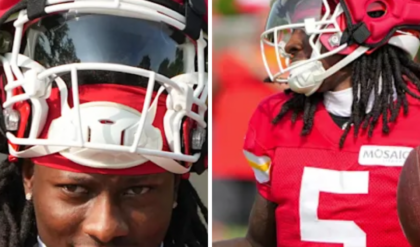
Set aside all the awe and wonder. Rafael Nadal’s tennis career has long been an exercise in solving riddles, for him and for everyone else.There were the early days, of wondering whether someone really could play tennis like that. They were the late teenage years when he left everyone scratching their heads over the physics of spinning a ball that darted up at his opponents’ eyes. Then came the question of how long he could play his rugged, bruising, physical style before his body broke down. For much of the last decade, in which he lost huge chunks of seasons to injuries, he’s been figuring out when to come back. When he’s come back, we’ve been figuring out if he has lost anything — a hunt for signs of aging and slippage.But there’s never been anything quite like solving the riddle of Nadal right now as he desperately seeks what is likely one last chance for a magical spring on his beloved red clay, playing on his surgically repaired and re-injured left hip and upper leg and various other damaged body parts.
In Barcelona this week, Nadal played his first tournament since January, his fourth in 17 months. So what to make of his opening round demolition of the physically and psychologically overmatched Flavio Cobolli, a 21-year-old Italian? How to consider his defeat at the hands of Australia’s Alex de Minaur, 25 years old and 11th in the ATP rankings, but without much of a record on clay even though his speed and fluidity would suggest he should have a good one?What sort of clues might they provide? Cobolli and De Minaur only know a tennis world where Nadal is a deity. They played him on a court that bears his name. Cobolli appeared to buckle at the knees after his first glance at the headband. De Minaur, straight after victory, was simply grateful that he hadn’t had to face Nadal a few years earlier. The Italian made 41 ‘unforced errors’, including 27 of the 34 points that Nadal won in the first set. How many errors are truly unforced in that kind of psychological situation? “Rafa is back,” Cobolli declared after he walked off the court following Nadal’s 6-2, 6-3 beatdown. Wait. Is he? He seems not to really know, at least not yet.After defeating Cobolli, Nadal — a 22-time Grand Slam champion, a 12-time winner in Barcelona and the greatest ever clay-court player — lamented the difficulty of solving the riddle that lies before him. Reaching his full potential means putting maximum stress on his biggest weakness, his body, so that, maybe, he can maximize everything else.

GO DEEPER
Ghosts of clay courts past: Rafael Nadal’s comeback is really about his legacy
“It’s super difficult, honestly,” he said. “It’s difficult to manage all this and do logical things when you are competing and when I am competing in the places that are super special, emotionally, for me.
“It was difficult to manage the conditions today, but I managed because I was more or less in control. I didn’t have to make an amazing effort in terms of physical demands. Let’s see if I can keep managing that the proper way,” he said.
He has to press enough to find his rhythm. He has to put himself through the necessary tests so that he is firing as well as he can manage when the French Open rolls around at the end of May, but not so much that he gets hurt and cannot get to Roland-Garros.
Factor in playing in front of Spanish crowds, in his favorite tournaments, and with maybe the most competitive psyche on the planet, and the riddle gets very complicated very quickly.

Nadal has to push his limits — just the right amount (David Ramos/Getty Images)
“Right now, the main thing is not winning, rather leaving the tournament healthy,” Nadal said after De Minaur beat him 7-5, 6-1. “After losing the first set, the match was over.”
This is the player who, two years ago, climbed back from two sets down in the final of the Australian Open against Daniil Medvedev after barely playing for months. Two months later in Indian Wells and two service breaks down in the deciding set against Sebastian Korda, he stormed back to win in a third-set tiebreak.
This is the player who numbed his left foot to dead weight with anaesthetic injections to win the French Open for the 14th time.
Things are different now. In addition to the tender hip region and the chronically injured foot, he has been struggling with an abdominal muscle injury that has barely allowed him to serve in the past two months and forced him into a dialled-back motion that bears little resemblance to the twisting, torquing movement that has helped propel him to so much success.
For years, the tennis wonks — and plenty of players — have preached the value of data and next-generation statistics to gauge quality. Nadal, not much of a numbers guy himself, defies data. A rolled backhand on a tight angle in a big spot, a sprint to catch up with a drop shot and turn it back with a perfectly-lofted lob, a screaming forehand flick followed by a signature windmill fist pump. That’s all it takes to get the most devout dataheads to toss out the stat sheets and slot him into the French final on the second Sunday in June.
His matches have rarely been exercises in logic and least of all now.
But for those who like numbers, his first serve was generally in the neighborhood of 110 miles per hour (177 kilometres per hour), or about 10-15 per cent below his average in 2022. Anyone who has seen Nadal even a few times before this week could tell he was serving at what looked like three-quarters speed.
He also made plenty of errors. After all this time away, that was hardly a surprise or an indication of how sharp he might be in a month.
Sure, he could have done more, perhaps served harder, he said, but it’s a tradeoff between doing something that makes playing better possible this week, but might rob him of “the possibility to play the next day or the next couple of days, or in terms of weeks, in Madrid or Rome.”
There’s another factor to consider: nobody talks Nadal’s chances down as well as he does. He has won those 14 French Open titles but sometimes shows up shrugging his shoulders and shaking his head and talking as though he has no shot. It might be called sandbagging if his fellow players took it all that seriously. They don’t, especially on clay.
Paul Annacone, who coached Nadal’s rival Roger Federer through some of their toughest battles, called Wednesday’s match for Tennis Channel and liked a lot of what he saw.
“Needs to stay healthy and get a bunch of matches in,” Annacone wrote in a text message shortly after it was over. Then he added some words of warning to the rest of the field. “He will improve tons if he gets to keep playing, but I don’t think he was that far off.”
Like everyone else, Annacone saw those flashes of the Nadal who is always an instant away from magic.
Against Cobolli, it was that stretching forehand down the line from deep in the corner when the point seemed far gone. With a flick of the wrist, the ball was tearing up the court. To make the shot, Nadal had to crouch sideways on the run onto that surgically repaired hip.
Against De Minaur, it was a handful of rocketed backhands in the first set when the Spaniard was revving his engine in fits and spurts, testing how close to the edge he might be able to push. One left the Australian with his hands on his hips, wondering how it had zipped past him. Another had him clapping his racket.

Nadal has shown flashes of his best game (Manuel Queimadelos/Quality Sport Images/Getty Images)
Here’s one next-generation number that warrants some consideration.
It’s called the ‘steal score’, the percentage of points a player wins when his opponent has put him on the defensive. According to Tennis Data Innovations and TennisViz, the companies that collect and crunch the data, the tour average is 33 per cent. Nadal has long been a master at switching from defense to offense. Against Cobolli, Nadal’s steal score was 47 per cent. He was being cautious, but not at the cost of one of the hallmarks of his game. The serve has never really been a strength.
His next riddle is a bit more pedestrian: the schedule. Next week brings the Madrid Open. It’s on red clay, but the clay plays differently than Roland-Garros because of the city’s altitude (600 metres, or 2,000 feet, higher than Paris) and the harder composition of the crushed brick. Playing there might not do all that much in terms of French Open prep, but Nadal is loath to miss one of his last chances to play in front of a hometown crowd, if this really is his final season.The Italian Open in Rome is a better facsimile of Roland-Garros. He wants to play that, too, but can his brittle body withstand two more top-level tournaments and then the five-set crucibles of a Grand Slam?Passion or pragmatism?Rest or rhythm?The riddle of Rafael Nadal rolls on.





